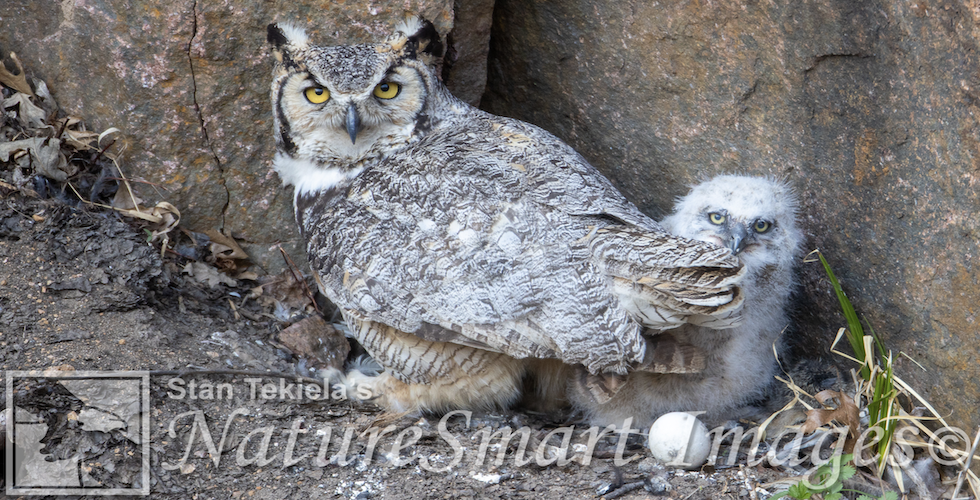
Some Great Horned Owls Nest Late
Stan Tekiela, naturalist and wildlife photographer, shares with us why he thinks that some Great Horned Owls nest late.
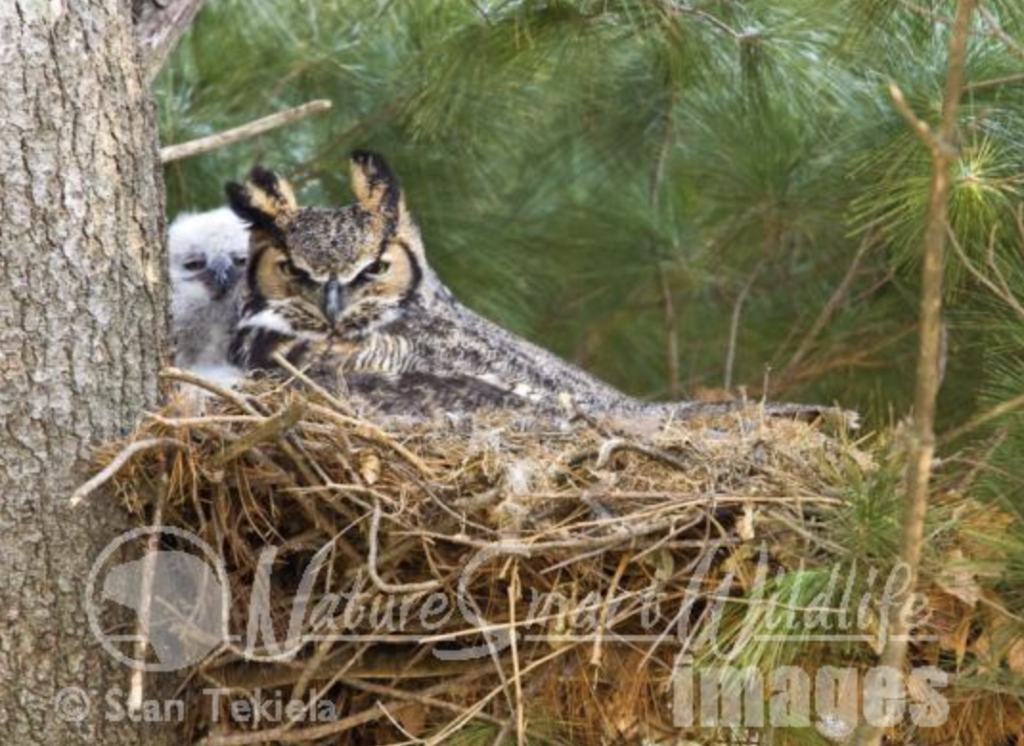
There are a lot of aspects of nature that I find interesting. However, what I find even more interesting are what people think of nature. Or more specifically, I am curious about the “rules” that people place on nature. And how everyone is surprised when nature doesn’t follow these human-imposed rules. We often get confused or upset when nature doesn’t follow the rules we have laid out.
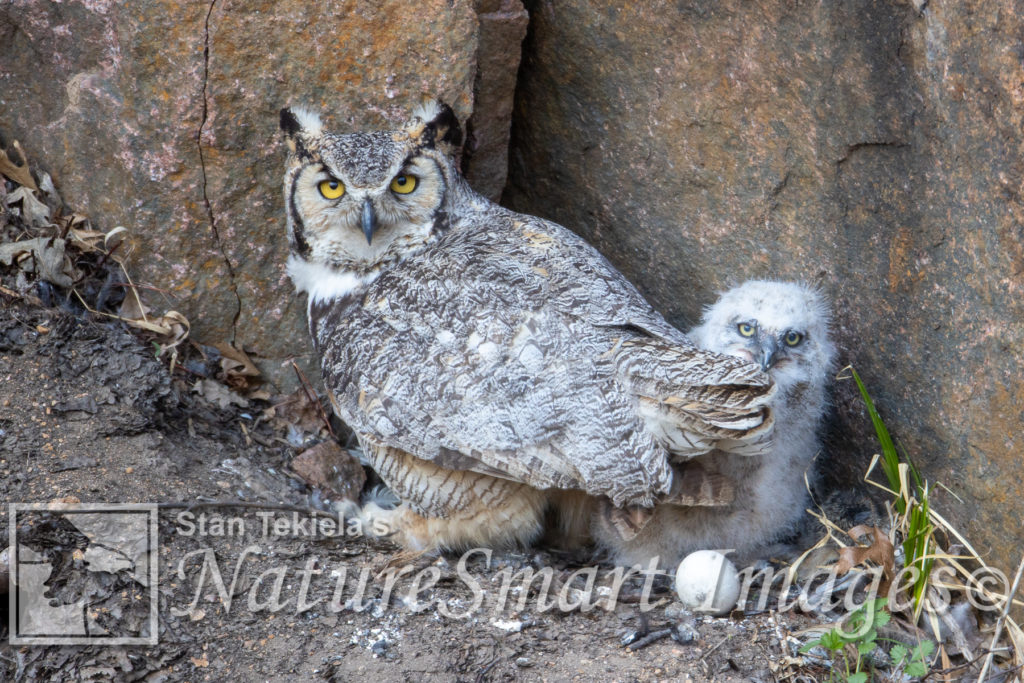
This came to mind the other day while photographing a mother Great Horned Owl (Bubo virginianus) and young owlet in the month of May. What’s so unusual about that, you ask? If you check any of your bird books or do a quick Google search, you will find references to the Great Horned Owl as one of the first or earliest birds to nest each spring. Most nesting in the northern states takes place in early February with the chicks hatching in March. By the middle of April the young Great Horned Owls are already out of the nest and starting their lives as master predators.
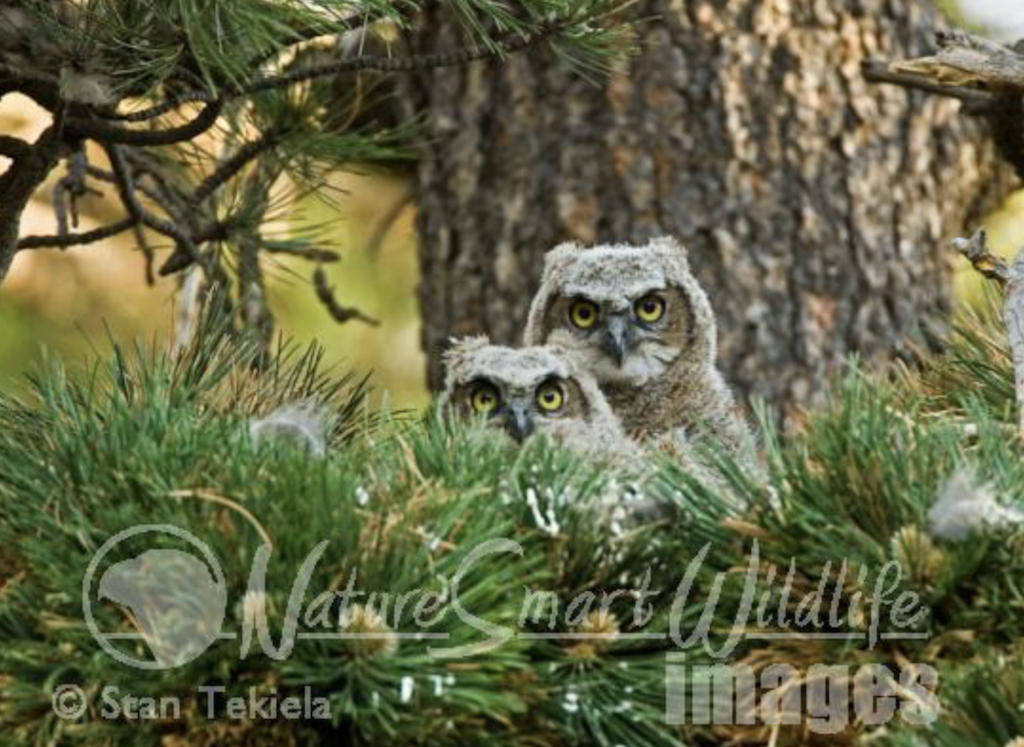
In general, this is correct information. Even in places like Florida or Texas, the Great Horned Owl is one of the first birds to nest each season, starting in December or January. Because of this, we say with absolute certainty that this is the nesting habit of Great Horned Owls, with no exceptions. Then along comes a rule breaker like the Great Horned Owl mother and chick I’ve been visiting and photographing.
If you have been reading my column, you know I love the rule breakers of nature. The critters who don’t follow the rules that we people put out for them to follow are exciting. I like how nature is constantly changing, exploring, probing new possibilities—all with the goal of successful reproduction of the species.
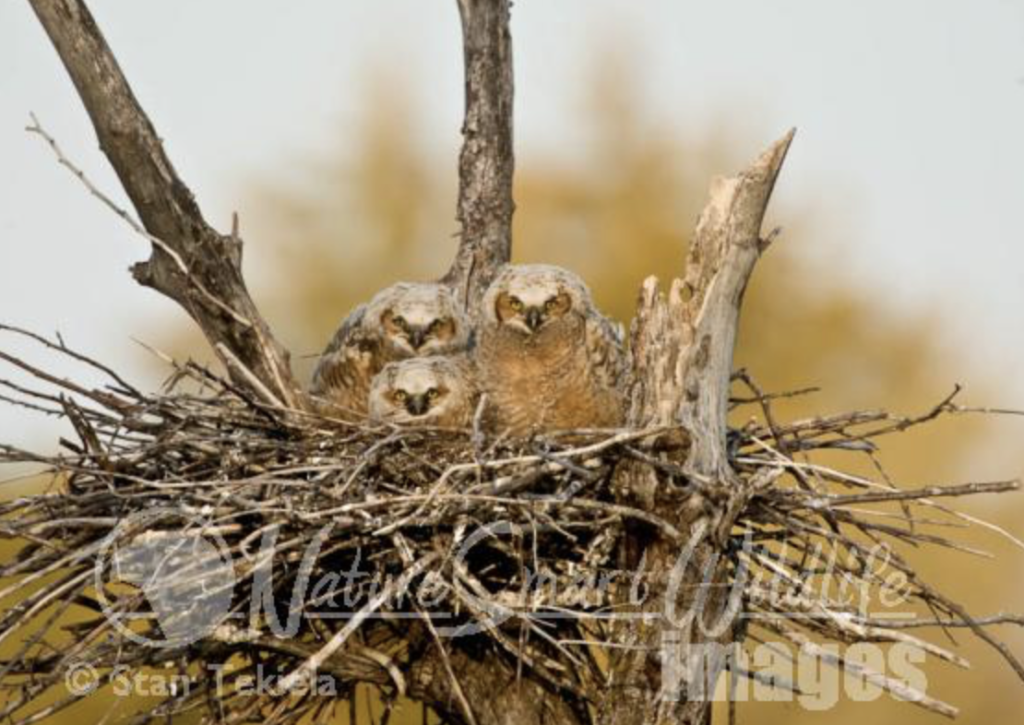
So here is a Great Horned Owl mother who is nesting very “late” in the season. Why would this happen? At this time of year (in the month of May), young Great Horned Owls are already out of the nest, flying around following their parents and begging to be fed. But right in front of me is a mother with a very young chick, perhaps only 2 weeks old and nowhere near ready to leave the nest.
The late-nesting of a Great Horned Owl can happen for a couple of reasons. The mother could have tried nesting earlier this year, along with the other Great Horns and, for whatever reason, her nest failed. This means she would have had to start over. To fully understand this concept, you need to know a few things. For example, all wild birds have a “season” for nesting. There is a limited amount of time, or window, that the female can produce eggs. Hormones in her body turn on the reproductive track to produce eggs, and for a short window of time she is able to lay eggs. If her first clutch of eggs failed, and she was still within the window of egg laying time, she would be able to produce a second clutch of eggs. If she lost her eggs and the window of time had already closed (her body can no longer produce the hormone that triggers the eggs), then there would be no more nesting activity for this year and she would have to wait until next year.
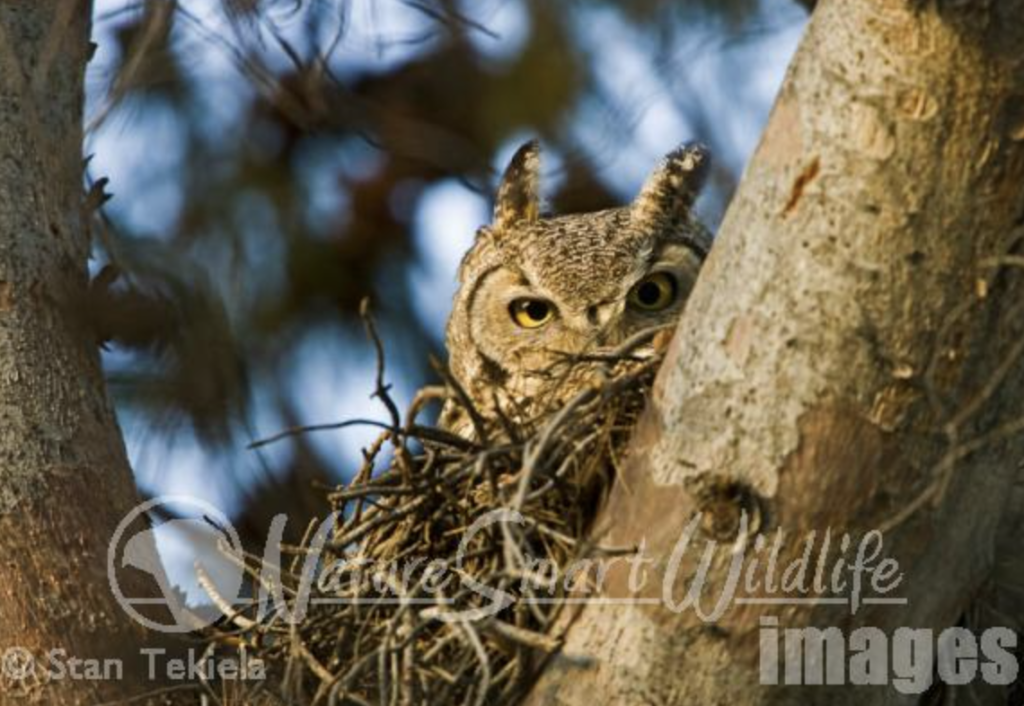
All wild birds have a “season” for egg laying. Outside of this egg laying time, the bird’s reproductive track is inactive and not functioning. This is particularly important for migrating birds. The reproductive track in birds who travel thousands of miles for migration shrivels up to save on overall weight. I am fond of saying; Why carry around all your junk if you’re not using it?
Another possibility of why the Great Horned Owl mother is nesting late is because she was more successful in the past at nesting later in the season. Or to be more accurate, perhaps her mother was a late nester and those traits were passed onto herself, who is now a late-nesting bird. This means her offspring will perhaps also be late nesters. This is the classic “rule breaker” bird.
So these are the things that run through my head while I am standing and waiting for the baby owl to wake up and poke its head out from behind the mother and I can finally capture a picture. I enjoy the rule breakers and hope that these kinds of examples will help you understand that nature is never the same and you shouldn’t expect it to be either. Nature is always changing and adapting. This is how nature works, and it’s extremely important for the survival of all things wild.
If you enjoyed Stan’s post about Great Horned Owls, you may enjoy one of his amazing nature books: Majestic Eagles, Wild Birds, or Backyard Birds: Welcomed Guests at our Gardens and Feeders.
You can follow Stan on Facebook and Twitter, or contact him via his web page. Stan’s nationally syndicated NatureSmart Column appears in more than 25 cities spanning 5 states (Minnesota, Wisconsin, Michigan, Illinois, and Pennsylvania) and is circulated to more than 750,000 readers.
For more stories about wildlife and nature, sign up for our newsletter now!


